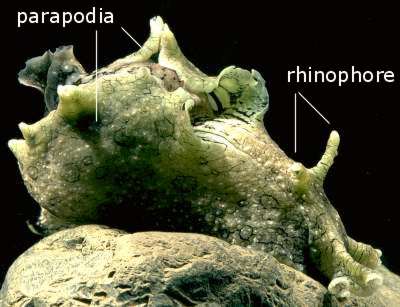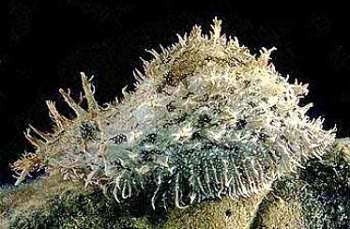

Aplysioidea
Order: ANASPIDEA
Superfamily: APLYSIOIDEA
PHOTO
Upper: Aplysia dactylomela, a typical Sea Hare with large parapodial flaps and ear-shaped rhinophores. Lower: Bursatella leachii, an aplysioid in which the parapodia are partly fused to form a more compact body. Photos: Bill Rudman.
The Superfamily Aplysioidea are the largest group of the Order ANASPIDEA and contain the animals we normally call Sea Hares. There is only one Family, the Aplysiidae, and it consists of 9 genera: Aplysia, Bursatella, Dolabella, Dolabrifera, Notarchus, Petalifera, Phyllaplysia, Stylocheilus and Syphonota. Species range in size from species growing less than 2 cm, to large species which reach over 70 cm in length. They usually have a head bearing a pair of enrolled rhinophores, and large flattened, enrolled oral tentacles on each side of the mouth. The shell, when present, is reduced to a thinly calcified internal plate over the gill and heart. This very reduced mantle cavity is enveloped in a pair of large parapodial lobes, which in some genera are partially fused to form a secondary parapodial chamber.
There are a number of characters which link the Aplysioidea to the primitive Akeroidea. These include the presence in the mantle cavity of an opaline gland (which secretes a colourless smelly fluid) on the floor and the purple gland on the roof (which produces a red or purple coloured ink). Both groups also have an oesophageal gizzard which contains an anterior chamber with large chitinous plates, and a posterior chamber with numerous fine spines. All anaspideans are 'herbivorous', feeding on specific algae or cyanobacteria.
Rudman, W.B., 2004 (December 22) Aplysioidea. [In] Sea Slug Forum. Australian Museum, Sydney. Available from http://www.seaslugforum.net/factsheet/aplysioidea
